How Many Calories Do Cats Need A Day? A Comprehensive Guide to Feline Nutrition
An Introduction: How many calories do cats need a day?
Feeding only as much as is needed will maintain cats’ health, weight, and well-being. However, deciphering just how much needs to be given each day is often stymied by confusing details, not least of which are the age, size, activity level, and health problems of the cat. More food than is required can lead to obesity, and underfeeding will guarantee a properly malnourished cat.
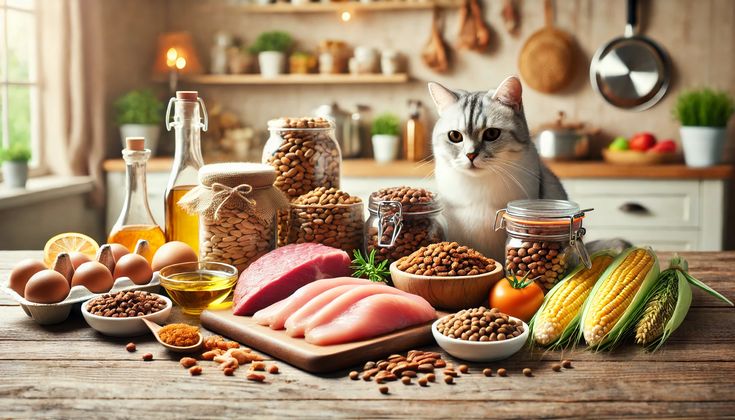
In this article, we will look at calorie needs dependent on life stages for cats, what can differ in their metabolic rate, and how to go about calculating a proper calorific intake for your cat. You are bound to find all the pertinent information, whether this is your first pet or you want to fine-tune your beloved feline companion’s diet.
So why is it important to know how many calories your cat needs?
Before we get into the details, it is important to understand why calorie requirements are such a hot topic.
Calories, mankind is already aware that calorie is a unit of measure for energy, and so do cats need calories in their daily activities like scratching trees and licking themselves to keep balanced, but just how many? By giving your kitty the appropriate calories, make sure that they keep:
• A weight that minimizes the chances of diseases related to being overweight/obese.
• Fuel for playing, exploring, and general activity
• Control growth and development, especially in kittens.
• Assist with their immunity and general wellness.
Excess calories can generate overweight, resulting in diabetes, joint diseases, and heart diseases. Likewise, too little calorie intake for an appreciation of any given period would lead to weight loss, lethargy complications, and waning of the immune system.
Factors That Affect How Many Calories Cats Need a Day
Cats are individual creatures who should not all be compared to a blanket standard based on weight and goal weight.
Cats are individuals, and their caloric needs also depend on their individuality. We will examine the major points that determine their day-to-day needs.
Age
Kittens: Kittens are in a rapid growth phase and require more calories per pound of body weight than adult cats. This calorie consumption fuels the bones and muscles and enables the sport.
Adult Cats: Once a cat is an adult, generally when it reaches one year of age, its calorie requirements stabilize. It is then that maintenance takes center stage.
Senior Cats: Older cats are often less active, and that may mean they need fewer calories but some can’t absorb calories as well so will require more
2. Weight
Body weight is likely one of the most significant factors determining caloric needs in cats. Large-bodied cats naturally require more calories to sustain their body weight, while those with small body size need lower amounts.
3. Activity Level
Active Cats: Generally speaking, playful, curious, and outdoor cats would burn calories in much larger quantities and would thus need more energy to sustain their activity levels.
Sedentary Cats: The indoor or limited-activity cats would require fewer calories to avoid any risk of gaining weight.
4. Life Stage and Reproductive Status
A spayed/neutered cat may need fewer calories due to hormonal changes that tend to slow down metabolism.
Pregnant or nursing queens: Queens require additional calories to support their kittens.
5. Health Conditions
- In hyperthyroidism, a cat would normally burn more calories than usual.
- Diet will be calorie-restricted for the overweight or obese cat.
6. Breed
Certain breeds such as Maine Coons and Siamese-Burmese can have higher calorie requirements.
Calculating How Many Calories Cats Need Daily
Now let’s break down how to calculate your cat’s caloric needs step by step.
Step 1: Calculate the Cat’s Resting Energy Requirement
RER stands for the Resting Energy Requirement. It is the number of calories your cat needs to breathe, circulate blood, and maintain normal temperature in a warm environment. To know RER, you can use the following calculation:
RER= 70×(Body Weight in kg) 0.75
Step 2: Adjust for Life Stage and Activity Level
RER is multiplied by a factor depending upon the life stage and activity level of the cat.
Kittens: RER × 3
4-Month-Old to 1-Year-Old Kittens: RER × 2
Adult Neutered Cats: RER × 1.2
Active Adult Cats: RER × 1.6
Pregnant or Nursing: RER × 2-6
For example, using the case of the 4 kg neutered adult cat above:
198x 1.2 = 238 calories/day.
198×1.2=238 calories/day.
Step 3: Monitor and Adjust
Different cats will respond differently, so these figures should only be considered guidelines for your kitty. Check your kitty’s weight and body substance regularly and adjust the caloric intake accordingly.
Average Caloric Needs by Weight and Activity
To make calculations easier, here’s a table summarizing calorie needs by weight and activity level.
| Weight (kg) | Indoor (Low Activity) | Moderate Activity | High Activity |
| 3 kg | 150 calories | 180 calories | 210 calories |
| 4 kg | 180 calories | 220 calories | 260 calories |
| 5 kg | 200 calories | 250 calories | 300 calories |
| 6 kg | 240 calories | 280 calories | 340 calories |
Monitoring the Caloric Needs of Cats Over Time
Considering that the caloric needs may change, find different ways to efficiently monitor and adjust the diet for a cat.
1. Body Condition Scoring (BCS)
An overall BCS is on a standard scale of 1 to 9 that measures the weight of the cat.
1-3: Underweight (Ribs visible, minimal fat cover).
4-5: Ideal weight (Rib parts palpable but invisible).
6-9: Overweight (No palpable ribs, visible fat deposits).
2. Adjust Portions Gradually
Should it be determined the cat is gaining or losing weight, the caloric intake can be increased or decreased stepwise by anything from 5 to 10 percent weekly, thus allowing the cat to settle again.
3. Weigh the Cat Regularly
To be able to note any fluctuations or prevent any weight issue, weigh the cat on a monthly basis.
Reasons for Cat Caloric Needs Variation
The path is being opened to find the causes of the differences that exist among distinct cats in reference to caloric needs.
While overall recommendations are beneficial, caloric requirement depends from cat to cat based on:
Metabolism: Just like humans, every cat has its peculiar rate of metabolism, which decides how efficiently food is converted to energy.
History of illness: Cats recovering from an infection, surgery, or chronic long-standing conditions often require specific calorie modifications.
Body composition: Lean cats or those with more muscle mass burn calories faster than those with a higher fat percentage.
Signs That Your Cat Might Be Getting Too Much or Too Little Food
To determine whether the caloric intake is adequate, weigh and observe your cat.
Signs of Overfeeding:
Weight gain: A noticeable increase in weight in addition to a lack of a waistline.
Lethargy: Inactivity with laziness due to carrying extra weight.
Difficulty in grooming oneself: Mopping overweight cats can prove to be a difficult chore.
Signs of Underfeeding:
Weight loss: Loss of muscle mass is visible, as is rib prominence.
More insistence on food: Begging for food or scavenging increases.
Lethargy: Low energy results from lack of nutrition.
Useful Tips to Control the Caloric Intake of Your Cat
If your cat’s caloric intake is a cause of concern, these simple steps can help keep the kitty in good shape.
Measuring Serving Portions:
Utilize precise amounts of food in your appropriate bowls with either a digital kitchen scale or measuring cup.
Feeding Quality Cat Foods
Most complete and balanced foods are available that meet the AAFCO standards.
Limit Treats
There must be an allowance of about 10% for treats out of the total calorie intake of your cat.
Establish Routine Feeding Times
Feed your cat at the same time every day so that it builds appetite and energy levels around it.
Weigh Your Cat Often
Have it such that you weigh your cat monthly to ensure that there is no weight gain.
Start by Filling in the Feeding Guidelines: Follow the feeding guidelines for the food packaging and adjust as needed to fit your unique cat’s needs.
Hold Little Meals Often: Cut down the daily portions into smaller meals and offer them in a way that will emulate your cat’s feeding behavior.
Conclusion: Adjusting calorie intake for your cat
It is very important to know how many calories a cat needs in a day so that it can live a healthy and happy life. This can be done through an analysis of factors such as the animal’s weight, activity level, and life stage. All of these parameters combined can help formulate a feeding plan that addresses the individual needs of your roommate. Weight monitoring needs to take place, any dietary changes need to be instituted, and an individualized form of guidance requires the information of a veterinarian.
A well-fed cat is a healthy, social, and satisfied companion. So go ahead and begin calculating the calories your cat needs every day so that she is healthy and has optimum nutrition.
FAQ About Cat Calorie Needs
Clearing some common remaining queries about what calorie levels work for common cats is put herein.
1. How many calories do kittens need a day?
Kittens need about 200-250 calories every day according to their age and size. They need higher calories than adults owing to fast growth.
2. Do senior cats need fewer calories?
Yes, but in general, senior cats preferably consume fewer calories unless a certain condition calls for more energy expenditure.
3. How can I tell if my cat is overweight?
Check their body condition: an overweight cat will usually have a round belly, no defined waist, and difficulty feeling her ribs underneath the skin.
4. Can I trust feeding recommendations on food labels?
These are general guidelines for feeding; they are generic and may not accurately reflect the specific needs of your cat. Indeed, they may serve as guidelines from which you need to improvise.
Let us turn to some common queries with respect to caloric requirements in felines.
1. What is the dosage of calorie intake before or after a spay/neuter surgery?
Generally, Spaying and Neutering reduce the metabolism rate in a cat slightly. Cats should consume approximately 20% fewer calories than before.
2. Do indoor cats require fewer calories?
Yes, indoor cats are less active than their outdoor counterparts and thus need fewer calories.
3. What can be done to prevent the cat from overeating?
Portion control, feeding at specific times, and the use of puzzle feeders to slow down eating.
4. Are these calorie needs subject to change with age?
There are a possibility for them to do so. Senior cats may require a lower calorie intake owing to their reduced activity associated with age, while there are those losing body weight due to pathological conditions that require calories in greater amounts.

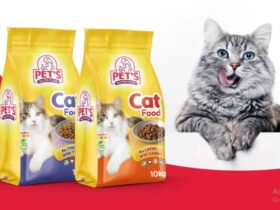
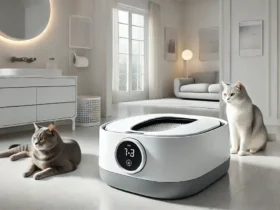
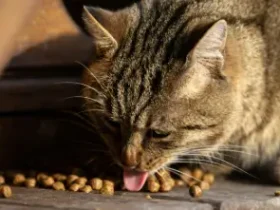
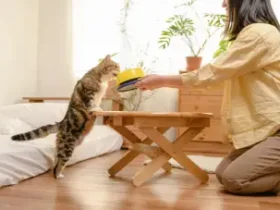
Leave a Reply